ULED is not a specific innovation but instead a collection of around twenty distinct inventions that cover a broad colour range, movement speed, and localized lowering, among other things. ULED panels are conventional LED ones, but they have had a few specific tweaks made to improve the visual experience and provide a better image.
This is in contrast to QLED, which makes use of the technique known as quantum dots to provide a superior viewing environment. Although some of the uled vs OLED lineup’s products utilize the use of perovskite software, these panels are not precisely on pace with the quality of a decent QLED display. The very first point you need to be aware of is that QLED is a form of Lcd monitor. This type of panel gives you the ability to achieve image clarity that is comparable to that of rising Amoled TVs at a significantly affordable cost.
Such screens use a metallic nanostructured filter that is placed across the backlighting and the screen directly. The term “quantitative dot light-emitting diodes” refers to the technology behind the light source. This results in a considerably more pleasant watching entire experience by greatly improving both the colours and the contrast of what is being seen in uled vs UHD.
Key Differences Simplified
Uled: ULED televisions, in contrast to LCD versions, are capable of displaying colours that are far more saturated without requiring the use of extra technologies such as colour LEDs or qds.
Qled: QLED TVs make use of conventional LCD screens that are illuminated by Diodes. A coating of quantum dots, which are located among the Display and the backlighting, act as lighting filters to generate colours that are more true to life and realistic.
Meaning
| Uled | Qled |
| Utilizes both machinery and programming to get optimal image quality. Qds might be included in the hardware. | Images created using quantum-dot technology are vivid and highly pigmented. |
Usage Examples
- Example 1: ULED TVs provide resolutions of up to 4K, currently equal to or higher than the sharpness of the highest-quality television shows and films that are currently being produced. Every single QLED television has a resolution of at least 4K, with certain models reaching as high as 8K.
- Example 2: Opt for something like the Full HD ULED if you desire a good television at a decent cost; choose a Samsung QLED when you want a better screen with greater quality, darkened blacks, and a bit more brilliance.
Other Similar Terms
Is Hisense ULED the same as QLED?
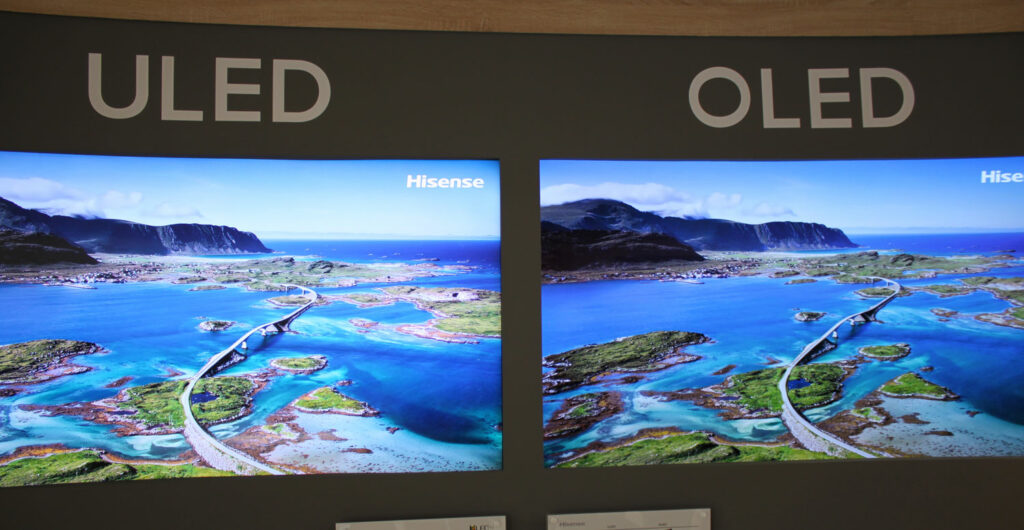
Nevertheless, the “U” in “ULED” is for “Ultra,” but as it seems, the idea is just exactly as deceptive as it sounded. Hisense uled is credited with the invention of the word, and it is reasonable to believe that the company did so as a direct reaction to the growing acceptance of Amoled Displays and Quantum dot TVs.
ULED is a trademarked name which relates to a package of Hisense electronics and Hisense technology of uled, qled or OLED Reddit that works together. In contrast to Amoled and QLED, which relate to physical items of hardware, ULED is a word that Hisense has coined.
Hisense claims that ULED is the culmination of 20 image copyrights functioning simultaneously to optimise backlight, movement, and colour data for the optimum viewing experience.
Which Is Better ULED or QLED?
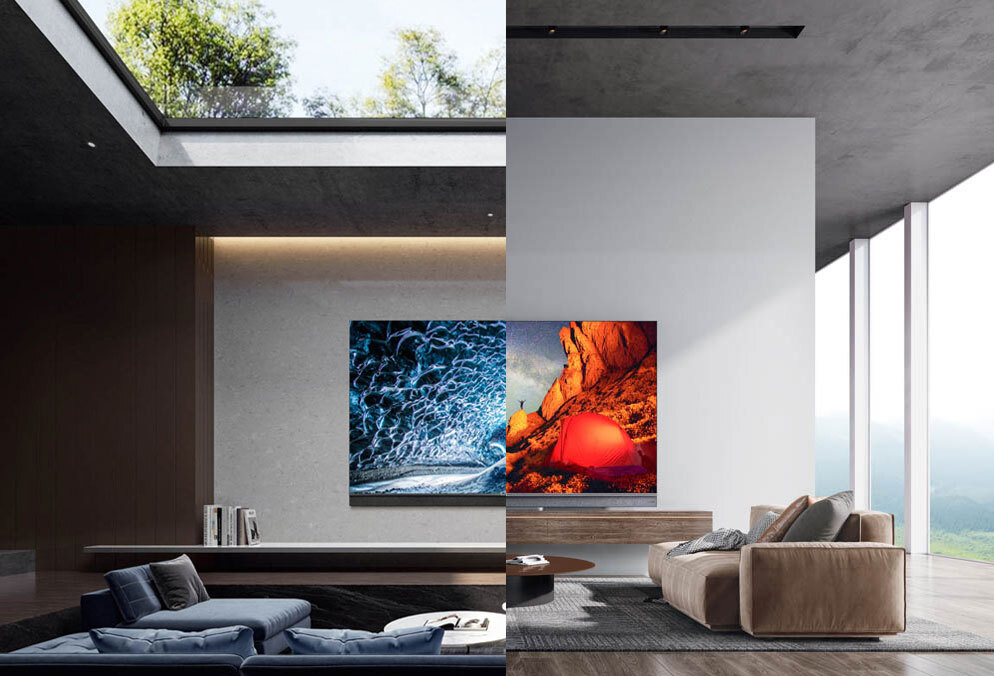
ULED televisions, on the other hand, are noticeably clearer, highly realistic, and provide a broader range of colours to choose from on the display. In contrast to QLED, which generates blacks by switching off pixel values, ULED employs a technique referred to as localized darkening.
This indicates that the Latest flagship Series 7’s various screen zones may have their brightness increased or decreased as desired. The Hisense ULED is an excellent choice for you if you are seeking an affordable television with good performance.
If you are searching for a tv that has greater quality, deeper blacks, as well as a bit brighter, and you are prepared to spend almost twice the money for these qualities, then the Samsung QLED is the best option for you.
How long does a uled TV last?

Televisions degrade over time, but there are things you can do to make your new purchase last for a longer period than it otherwise would. The lifetime of an LED television may range anywhere from four to ten years or between forty thousand and one hundred thousand hours, based on the makers.
This is contingent on how the uled & qled & nano cell television is used and how it is maintained. Aspects such as the kind, company, region, and surroundings all play a significant part. Due to the better performance hardware devices utilised, well-known manufacturers like Galaxy, Samsung, and Oled often survive longer than less expensive alternatives.
Nevertheless, because of less well-known companies, it is reasonable to anticipate that the lifetime lifespan will be several decades greater compared to the greatest Television guarantee.
What is the difference between LED QLED and OLED ULED?
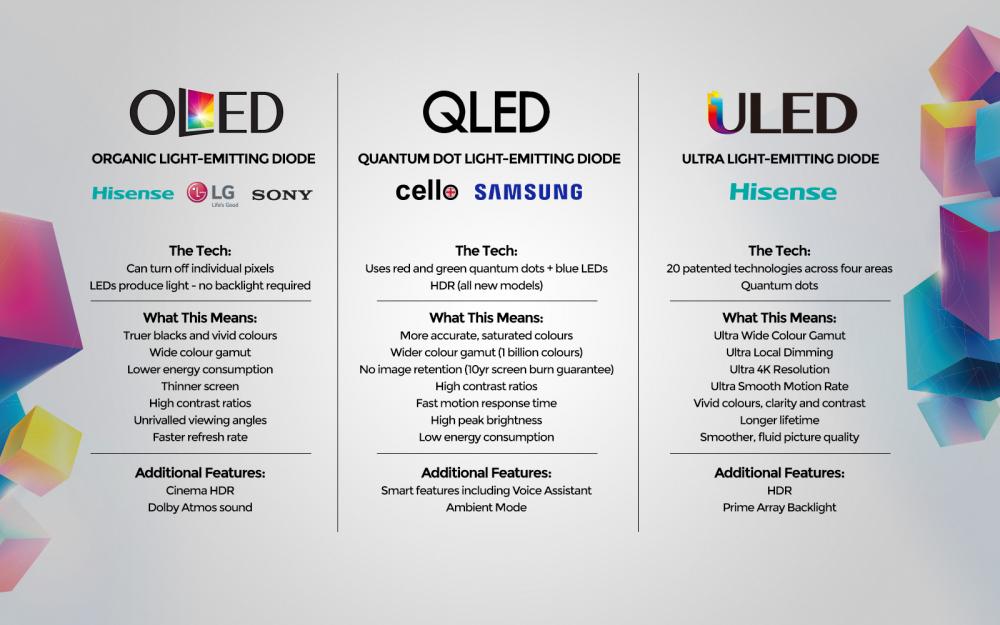
OLED is a unique design from LCD, which is now the most common form of television. A quantitative dot layer is added to an Oled LCD to create a QLED, which is a variant of the LEDs LCD technology.
The dots in an OLED display are “emissive,” which means they produce their lighting. In its present iteration, QLED, much like Led display, is a “transmissive” technology that depends on a powerful Backlight.
Should I buy a 4K or QLED TV?
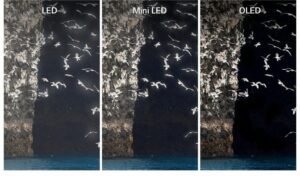
If you were to compare a 4K Led Display to a 4K Quantum dot TV, the generally accepted wisdom would indicate that the Quantum dot TV would be superior in regards to the colour reproduction it could provide. Even while Samsung sells the majority of QLED TVs, it also provides such televisions to Alcatel and Hisense.
Is QLED or ULED the future?
However, except LG Display can increase its production capacity and generate larger screens – which it is continuing to perform – the instantaneous progress of the contemporary TV might still conform to QLED. For the time being, OLED holds the title of the strongest and most expensive quality TV technology currently available.
Is QLED or ULED better for bright rooms?
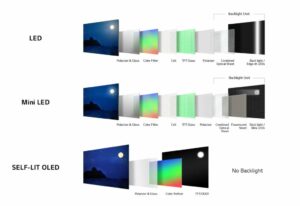
In comparison, ULED TVs can only achieve between 550 and 700 units of upper brilliance, making QLED TVs the superior choice for usage in environments with a lot of ambient light. QLED TVs offer a maximum light output of a maximum of 2200 nits. Therefore, QLED televisions are the most suitable for use in brighter rooms.
- Thus Far vs So Far [Which is Correct?] - September 3, 2023
- Uled vs Oled in 2024 [Which is Better?] - September 3, 2023
- Scarlet vs Red [Difference Explained] - September 3, 2023

![Uled vs Oled in 2024 [Which is Better?] Uled vs Oled](https://bitdifference.com/wp-content/uploads/2022/11/ULED-vs-OLED-a2fa6195fa814f208179ac98baa71326-150x150.jpg)
![QHD vs IPS in 2024 [Which is Better?] QHD vs IPS 1](https://bitdifference.com/wp-content/uploads/2023/07/IPS-vs-OLED-150x150.jpg)
![Monitor vs TV in 2024 [Which is Better?] Monitor vs TV](https://bitdifference.com/wp-content/uploads/2022/11/maxresdefault-5.jpg)
![Indigo vs Violet [Rainbow Colours] Indigo vs Violet](https://bitdifference.com/wp-content/uploads/2022/11/ultra-violet-indigo-150x150.webp)
![OLED vs AMOLED in 2024 [Which is Better?] Oled vs Amoled 1](https://bitdifference.com/wp-content/uploads/2023/07/oled-vs-amoled-1-150x150.jpg)
![Gigabyte vs Gigabit in 2024 [Simply Explained] Gigabit-vs-gigabyte](https://bitdifference.com/wp-content/uploads/2022/11/Gigabit-vs-gigabyte-150x150.png)

